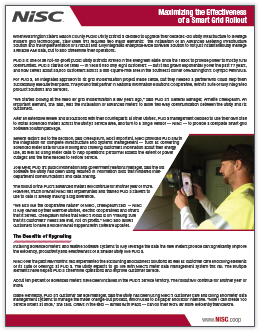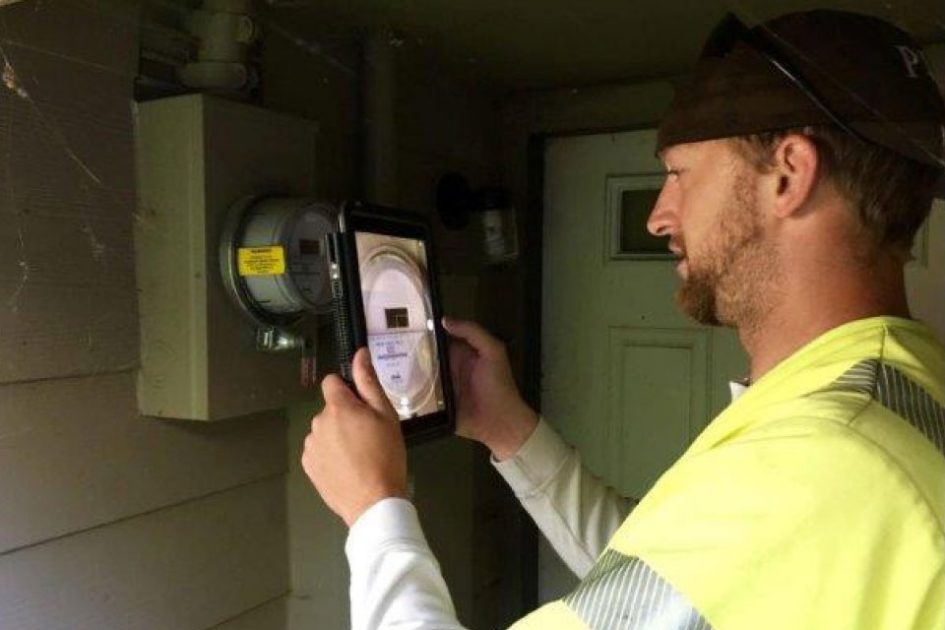 When Washington state’s Mason County Public Utility District 3 decided to upgrade their decades-old utility infrastructure to leverage modern grid technologies, staff knew this required two major elements: the installation of an Advanced Metering Infrastructure solution and the implementation of a robust and fully integrated enterprise-wide software solution to not just instantaneously manage available AMI data, but to also streamline their operations.
When Washington state’s Mason County Public Utility District 3 decided to upgrade their decades-old utility infrastructure to leverage modern grid technologies, staff knew this required two major elements: the installation of an Advanced Metering Infrastructure solution and the implementation of a robust and fully integrated enterprise-wide software solution to not just instantaneously manage available AMI data, but to also streamline their operations.
PUD 3 is one of 28 not-for-profit public utility districts formed in the Evergreen State since the 1930s to provide power to mostly rural communities. PUD 3 started off small –– in 1939 it had only eight customers –– but it has grown exponentially over the past 77 years, and now serves about 33,000 customers across a 600-square-mile area in the southeast corner of Washington’s Olympic Peninsula.
For PUD 3, an integrated approach to its grid modernization project made sense, but they needed a partner who could help them successfully execute their plans. They found that partner in National Information Solutions Cooperative, with its suite of fully integrated product solutions and services.
“We started looking at the need for grid modernization a few years ago,” said PUD 3’s General Manager, Annette Creekpaum. An important element, she said, was the installation of advanced meters to allow two-way communication between the utility and its customers.
After an extensive review and discussions with their counterparts at other utilities, PUD 3 management decided to use their own staff to install advanced meters across the utility’s service area, and turn to a single vendor –– NISC –– to provide a complete smart-grid software solution package.
Several factors led to the decision, said Creekpaum. Most important, NISC provided PUD 3 with the integration for complete infrastructure and systems management –– such as converting advanced meter data for use in billing and showing customers information about their energy use, as well as using meter data to help operations personnel assess the extent of power outages and the time needed to restore service.
Joel Myer, PUD 3’s public information and government relations manager, said the old software the utility had been using resulted in information silos that hindered inter-department communications and data sharing.
The rollout of the PUD’s advanced meters will continue for another year or more. However, much of what NISC has implemented and trained PUD 3 staffers to use to date is already making a big difference.
“We also like the cooperative nature” of NISC, Creekpaum said — NISC is fully owned by their Member utilities, electric cooperatives and others that it serves. Creekpaum noted that NISC’s focus is on “making sure that its customers’ needs are met, not on profits.” NISC also allows customers to have a voice in what happens with software updates.
The Benefits of Upgrading
Installing advanced meters and relative software systems to fully leverage the data the new meters provide can significantly improve the efficiency, productivity and effectiveness of a smaller utility like PUD 3.
NISC over the past few months has implemented the accounting and business solutions as well as customer care and billing elements of its suite of offerings at PUD 3. The utility expects to go live with NISC’s meter data management system this fall. The multiple elements have helped PUD 3 streamline operations and improve customer service.
About ten percent of advanced meters have been installed in the PUD’s service territory. The rollout will continue for another year or more.
Diane Hennessy, PUD 3’s customer service manager, said the utility has been using NISC’s customer care and billing and meter data management systems to manage the meter change-out process, which used to be paper and labor intensive. “Now I can create 100 service orders at once,” she said. Crews in the field –– armed with iPads –– can do their work far more efficiently than before.
PUD 3 customers can sign up for the SmartHub function to communicate with the utility either online or via mobile devices such as Android or iOS-based smartphones and tablets. Hennessy said customers also can use SmartHub to access information about their accounts, and to receive and pay their bills electronically.
Myer said the utility soon plans to begin using SmartHub to keep customers up-to- date regarding power outages in their area and other important news.
NISC’s smart grid solutions also will improve PUD 3’s customer interactions in situations like the unusually cold winter of 2015-16, when higher-than-normal electricity usage –– and electric bills –– led to a sharp increase in customer calls to the utility. With advanced meters and SmartHub in place, customers will have real-time access to their recent and historical electric use and their billing history.
When the rollout of advanced meters is complete, PUD 3’s operations department will also have immediate access to information about how widespread a power outage is. NISC’s MapWise –– an integrated intelligent mapping solution designed to help visualize data –– provides utility staff and crews with visual/digital displays of the utility’s distribution system. NISC’s outage management system will help operations personnel quickly assess the pattern of meters without power, the likely cause of the outage, where they should deploy power-restoration crews, and how long the restoration effort is likely to take.
Then, PUD 3 can electronically notify affected customers that the utility is aware of the outage, and provide an estimate of when the power will come back on. Myer noted that PUD 3 crews will now be able to check –– while still out in the field –– that all customers are, in fact, back online after a power outage. Without advanced meters and the NISC software to collect and process their data, he said, power restoration crews would have no surefire way of knowing that all customers had been reconnected.
Smart Grid Implementation off to a Smooth Start
Creekpaum said that PUD 3’s implementation of a smart grid has “gone very well so far.”
Hennessy agreed. “We worked hard to prepare for the NISC transition,” she said, adding that the online training and vendor support from NISC were invaluable to staff. After years of planning –– and of working with older-style, monochromatic computers –– Hennessy and her coworkers are pleased to have moved to a modern and integrated enterprise system.
The changes already are helping PUD 3’s bottom line. “We are able to control costs with a fully integrated system like NISC,” said John Bennett, the utility’s director of business services. “We save on the up-front capital expense and annual maintenance costs, and see more efficient use of our employees’ time.”
Bennett added that PUD 3 has seen saving through efficiencies. “We didn’t have to integrate individual software packages, which saved us countless hours. This extends to software updates. We know the systems will communicate, so we don’t have to test and possibly spend time fixing the integration. We can also stay up to date with our system platforms, keeping us as secure as possible.”
For more information about NISC enterprise software solutions, visit NISC’s website at www.NISC.coop.
This sponsored advertising feature was published by the American Public Power Association.
